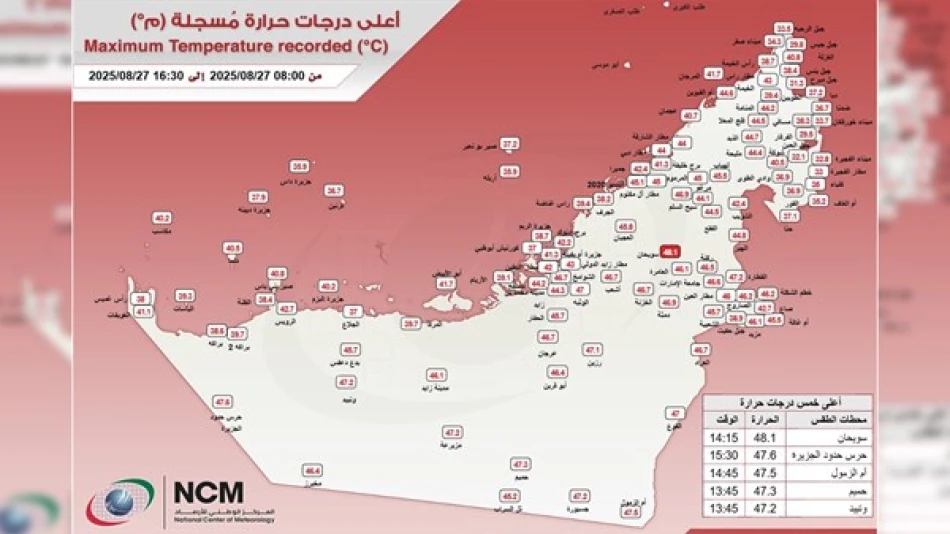
UAE Records Scorching Temperatures in Sweihan
UAE Hits Scorching 48.1°C as Gulf Region Faces Intensifying Heat Crisis
The United Arab Emirates recorded a blistering temperature of 48.1°C (118.6°F) on Wednesday in Sweihan, Al Ain, marking another extreme heat milestone that underscores the Gulf region's growing vulnerability to climate change and its mounting economic implications for energy consumption, infrastructure, and long-term sustainability planning.
Record Heat Strikes UAE's Eastern Region
The UAE's National Center of Meteorology reported the peak temperature at 2:15 PM local time in Sweihan, located in the Al Ain region near the border with Oman. This reading places Wednesday among the hottest days recorded in the Emirates this year, reflecting a broader pattern of intensifying summer heat across the Arabian Peninsula.
Al Ain, known as the "Garden City" for its historic oases and relatively cooler desert climate, has increasingly become a hotspot for extreme temperatures. The city's inland location, away from the moderating influence of coastal waters, makes it particularly susceptible to heat spikes that can strain both human comfort and mechanical systems.
Regional Context: Gulf States Under Thermal Pressure
The UAE's temperature spike mirrors similar extremes across neighboring Gulf Cooperation Council countries. Saudi Arabia regularly records temperatures exceeding 50°C in its interior regions, while Kuwait and Iraq have seen readings approach 54°C in recent summers. These patterns reflect the region's position in a global climate trend where desert regions are experiencing disproportionate warming.
Infrastructure and Energy Implications
Such extreme temperatures place enormous strain on the UAE's electrical grid, as air conditioning demand peaks during afternoon hours. The Emirates' heavy investment in nuclear and solar power becomes increasingly critical during these periods, when traditional gas-fired plants struggle with efficiency losses in extreme heat.
For businesses and residents, temperatures approaching 50°C create cascading effects: reduced outdoor economic activity, increased cooling costs, and accelerated wear on everything from vehicles to building materials. The construction industry, which employs hundreds of thousands in the UAE, faces particular challenges with mandatory work stoppages during peak heat hours.
Economic and Investment Considerations
The recurring pattern of extreme heat reinforces the UAE's strategic pivot toward climate-resilient infrastructure and renewable energy. The country's massive solar projects, including the Mohammed bin Rashid Al Maktoum Solar Park, become not just environmental initiatives but economic necessities as cooling demands surge.
For investors and businesses, these temperature records signal growing opportunities in cooling technology, energy storage, and climate adaptation solutions. The UAE's position as a regional hub makes it a testing ground for technologies that will likely be essential across the broader Middle East and North Africa region.
Looking Ahead: Adaptation Becomes Essential
As the UAE continues to experience these thermal extremes, the country's approach to urban planning, energy policy, and economic diversification takes on added urgency. The nation's vision of becoming a global center for sustainable technology and climate innovation is increasingly driven by immediate practical needs rather than distant environmental goals.
Wednesday's 48.1°C reading serves as a reminder that for Gulf states, climate adaptation isn't a future consideration—it's a present-day economic and social imperative that shapes everything from daily schedules to billion-dollar infrastructure investments.
 Layla Al Mansoori
Layla Al Mansoori







